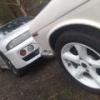Leatherette Gb#2 Orders
Announcements
-
Similar Content
-
Latest Posts
-
By DraftySquash · Posted
hahaha yeah. Plan is to get side skirts and probably just rear pods. But going to do them one-by-one. I've got a set that I really like from RHDJapen, but that one isn't shipped to AU. So need to find someone who can get it for me -
Here's an idea, answer the questions I asked you as they are trying to work out WHY the LSD will be binding up in a straight line.
-
You haven't driven many modern cars then have you? Most of them have sfa steering feel with their stupid electric bullshit steering systems.
-
By Murray_Calavera · Posted
He still hasn't said what the fluid was, saying "Tomei fluid" isn't enough detail. Using my crystal ball, sounds like the diff oil was 80W90, that is the only "Tomei fluid" I can find anyway. This problem might have been solved in 5 seconds by using a decent 80w-140 oil.






Recommended Posts